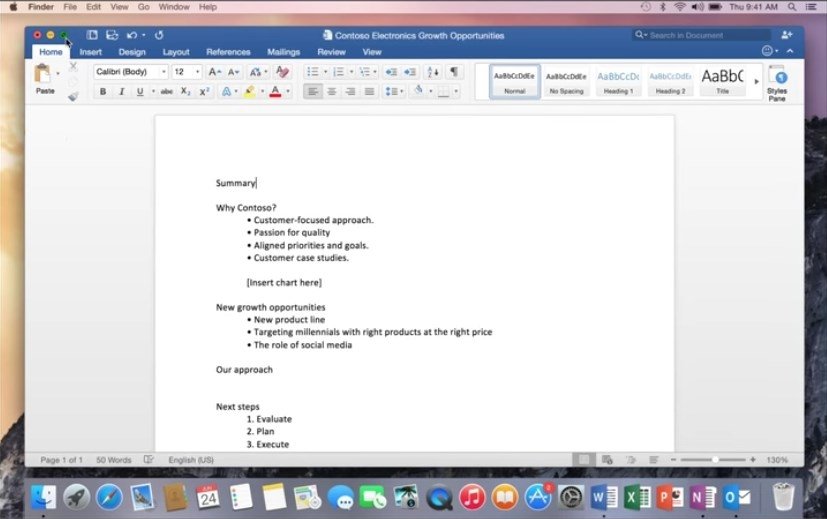Chemistry Add In For Word Mac Download
Ref-n-Write is a Microsoft Word Add-in which can help non-native English speakers to complete their papers. It will search and modify the text to appropriate writing style and tone, show statements and sentence templates with similar meaning from previous papers. Evernote Link: Mac OS X, Windows, Linux, Android, iOS. Download the Chemistry Add-In installer binary from here. Shutdown Microsoft Word application. Extract the downloaded zip file containing the installer. Run Setup.exe to execute the MSI installation wizard for installing Chemistry Add-In for Word. Once the installation is done, launch Microsoft Word. The ribbon now contains the new Chemistry tab.
Aug 17, 2016 The Chemistry Add-in for Word makes it easier to insert and modify chemical information, such as labels, formulas, and 2-D depictions, within Microsoft Office Word.
Do you want to create a solution that extends the functionality of Word? For example, one that involves automated document assembly? Or a solution that binds to and accesses data in a Word document from other data sources? You can use the Office Add-ins platform, which includes the Word JavaScript API and the Office JavaScript API, to extend Word clients running on a Windows desktop, on a Mac, or in the cloud.
Word add-ins are one of the many development options that you have on the Office Add-ins platform. You can use add-in commands to extend the Word UI and launch task panes that run JavaScript that interacts with the content in a Word document. Any code that you can run in a browser can run in a Word add-in. Add-ins that interact with content in a Word document create requests to act on Word objects and synchronize object state.
Note
If you plan to publish your add-in to AppSource and make it available within the Office experience, make sure that you conform to the Commercial marketplace certification policies. For example, to pass validation, your add-in must work across all platforms that support the methods that you define (for more information, see section 1120.3 and the Office Add-in host and availability page).
The following figure shows an example of a Word add-in that runs in a task pane.
Figure 1. Add-in running in a task pane in Word
The Word add-in (1) can send requests to the Word document (2) and can use JavaScript to access the paragraph object and update, delete, or move the paragraph. For example, the following code shows how to append a new sentence to that paragraph.
You can use any web server technology to host your Word add-in, such as ASP.NET, NodeJS, or Python. Use your favorite client-side framework -- Ember, Backbone, Angular, React -- or stick with VanillaJS to develop your solution, and you can use services like Azure to authenticate and host your application.

The Word JavaScript APIs give your application access to the objects and metadata found in a Word document. You can use these APIs to create add-ins that target:
- Word 2013 or later on Windows
- Word on the web
- Word 2016 or later on Mac
- Word on iPad
Write your add-in once, and it will run in all versions of Word across multiple platforms. For details, see Office Add-in host and platform availability.
JavaScript APIs for Word
You can use two sets of JavaScript APIs to interact with the objects and metadata in a Word document. The first is the Common API, which was introduced in Office 2013. Many of the objects in the Common API can be used in add-ins hosted by two or more Office clients. This API uses callbacks extensively.
The second is the Word JavaScript API. This is a strongly-typed object model that you can use to create Word add-ins that target Word 2016 on Mac and Windows. This object model uses promises, and provides access to Word-specific objects like body, content controls, inline pictures, and paragraphs. The Word JavaScript API includes TypeScript definitions and vsdoc files so that you can get code hints in your IDE.

Currently, all Word clients support the shared Office JavaScript API, and most clients support the Word JavaScript API. For details about supported clients, see Office Add-in host and platform availability.
We recommend that you start with the Word JavaScript API because the object model is easier to use. Use the Word JavaScript API if you need to:
- Access the objects in a Word document.
Use the shared Office JavaScript API when you need to:
- Target Word 2013.
- Perform initial actions for the application.
- Check the supported requirement set.
- Access metadata, settings, and environmental information for the document.
- Bind to sections in a document and capture events.
- Use custom XML parts.
- Open a dialog box.
Next steps
Ready to create your first Word add-in? See Build your first Word add-in. Use the add-in manifest to describe where your add-in is hosted, how it is displayed, and define permissions and other information.
To learn more about how to design a world class Word add-in that creates a compelling experience for your users, see Design guidelines and Best practices.
After you develop your add-in, you can publish it to a network share, an app catalog, or AppSource.
See also

Option 1:
Microsoft office für mac 2011 service pack 2. If you have the Lucida Sans Unicode font installed (check the font list in Word) you are in luck.
When you want to insert a symbol, click on the Insert menu and choose Symbol. In the font box select Lucida Sans Unicode. You will see a very rich selection of specialized characters available for use in Mathematical Operators. Here are a few that might be useful.
⇌ equilibrium symbol code no. 21CC
¯ anion charge 00AF
° degree symbol 00b0
℃ degrees Celsius 2103
√ radical 221A
→ reaction arrow 2192
∆ increment 2206
≈ is approximately equal to 2248
Now, here is an even easier way to get the equilibrium symbol. With the cursor at the insertion point where you want the symbol to appear, type 21cc, then press ALT and X simultaneously. If you have the Lucida Sans Unicode font available, this will type the equilibrium symbol without going to the insert symbol menu. This method will work with any of the symbols above, substituting the appropriate code before typing ALT+X.
Option 2:
For MS Word 2007/2010/2013: use the equation feature, designed for math, but works okay for chemistry.
Chemistry Add In Word Download
Microsoft Word Chemistry Add In Mac And Cheese
Go to the insert tab.
Click on the equation button on the far right.

Here are also shortcut commands to render most common things. For example, underscore _ creates a subscript and a caret ^ creates a super script. You have access to a wide range of arrows from a pull down menu, but -> will give you a simple right arrow (although it is not very long).
To get a long arrow, click on the operator button and choose the arrow with the word 'yields' written over it under common operator structures.
Chemistry Add In Ms Word
Click on the word 'yields' and replace it with as many spaces as you need to create an arrow of whatever length you want.
Microsoft Word Chemistry Add In Mac Computer
Finally, finish your equation.
Microsoft Word Chemistry Add In
Microsoft Word Chemistry Add In Mac Os
For older versions of MS Word, go to the insert menu and click on equation, which launches the Equation Editor Program (you can also find this program on your computer by searching for eqnedt.exe), which gives you the same ability to create equations.